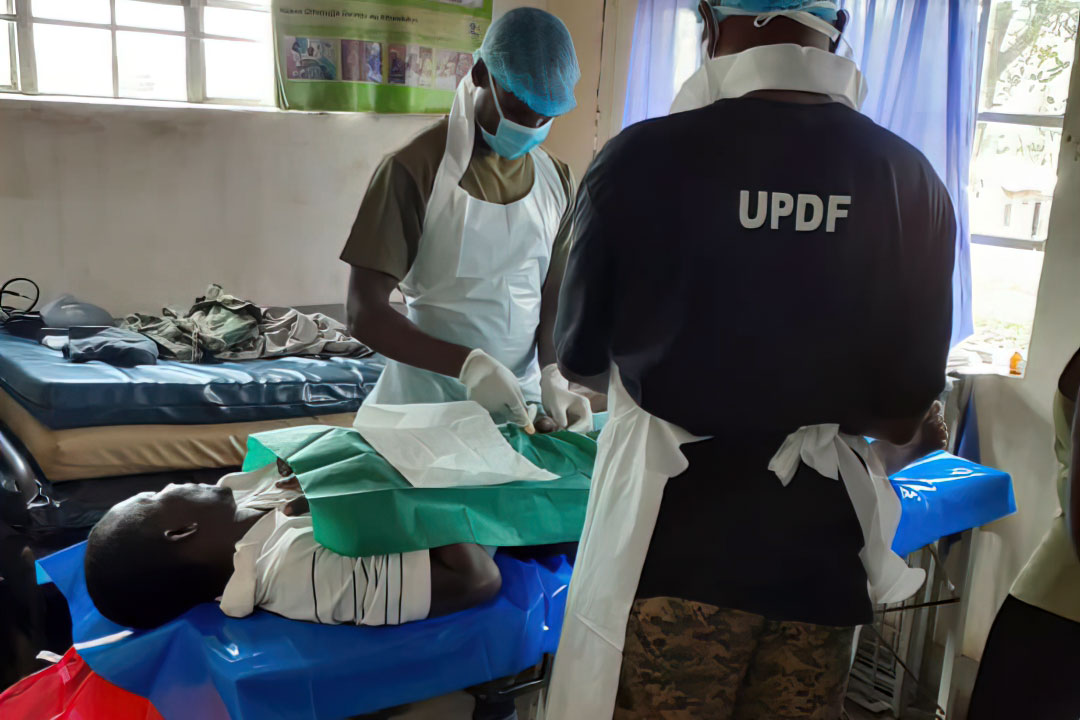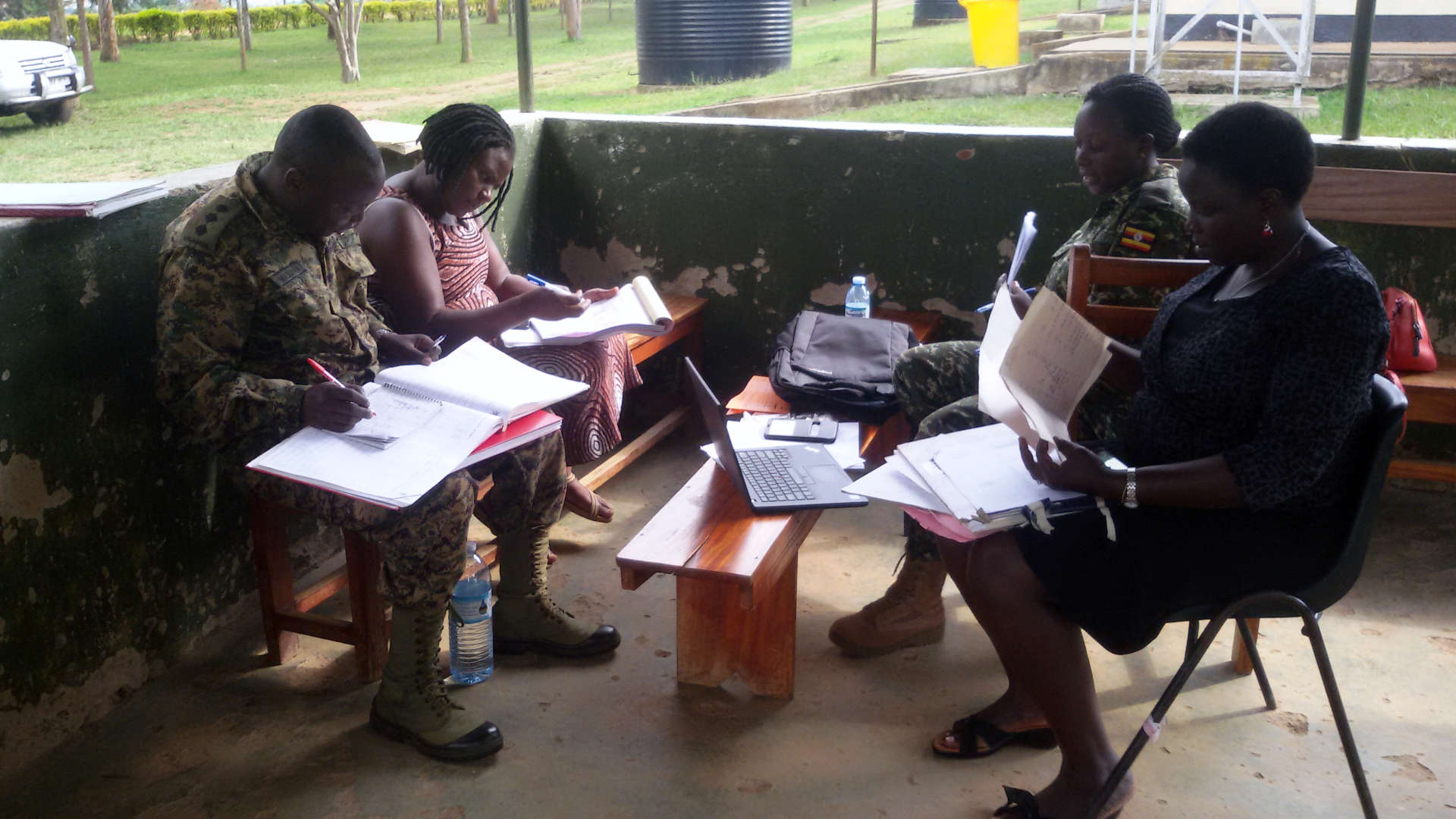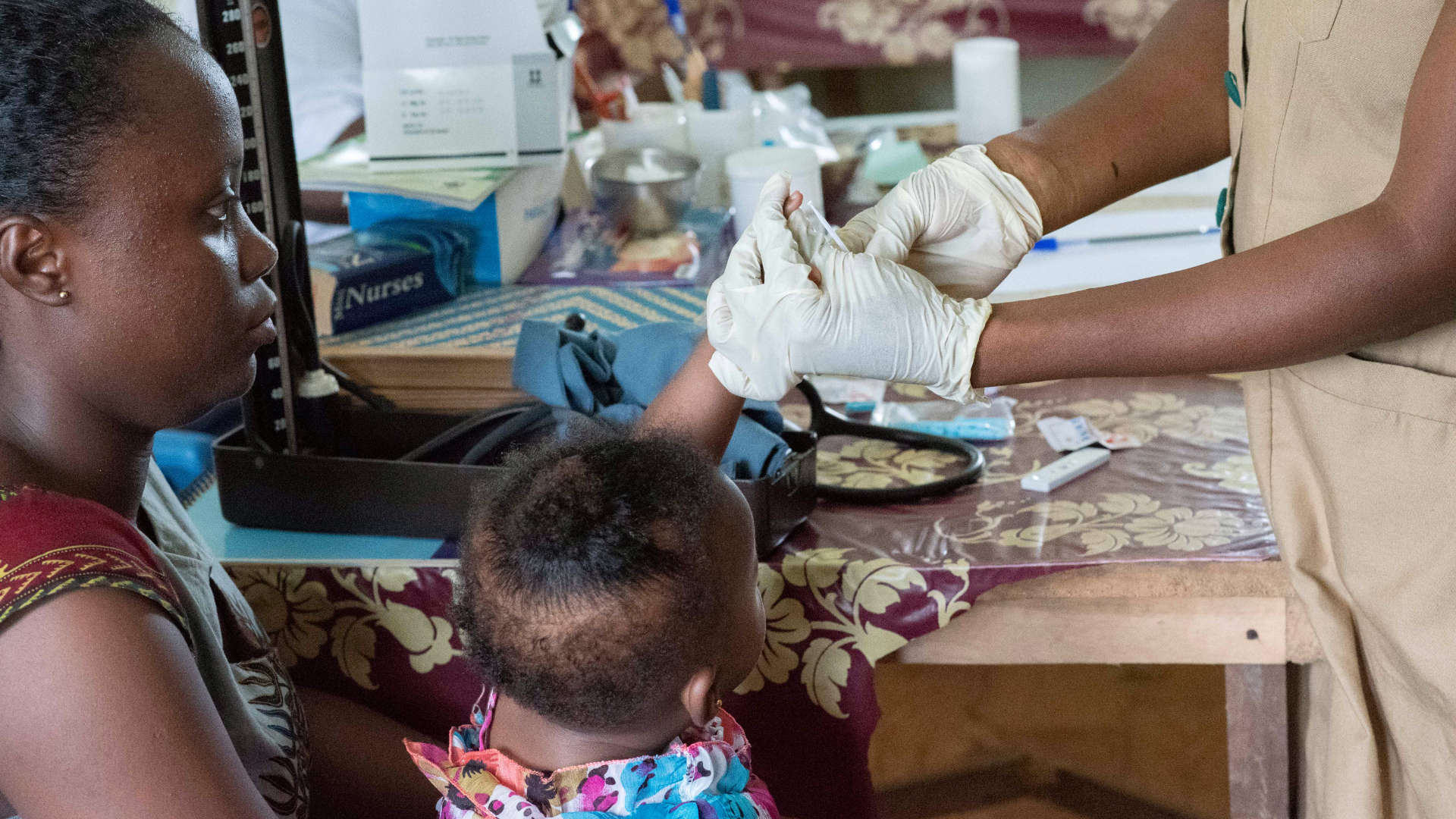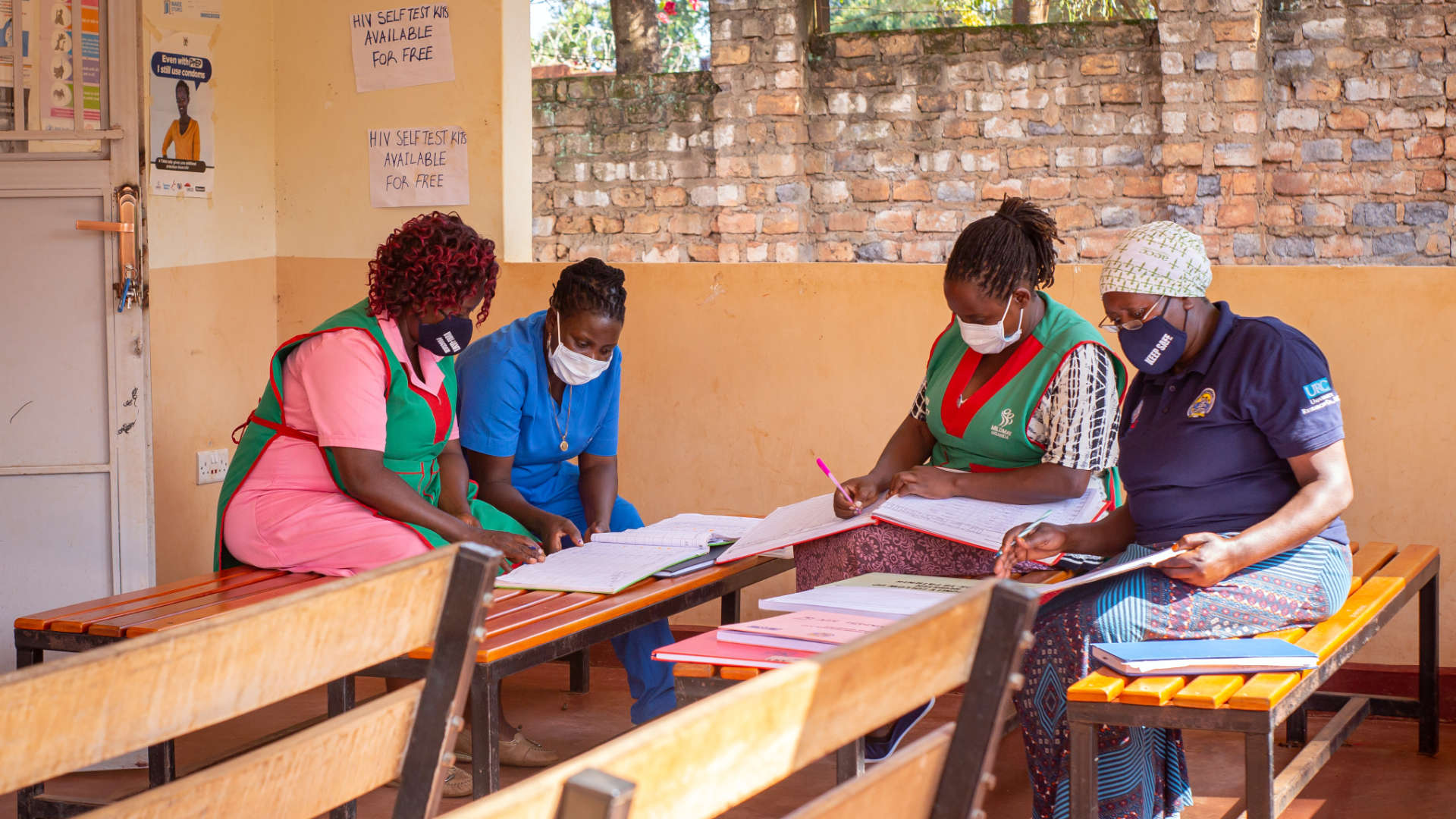Military personnel are amongst the highest-risk populations for contracting HIV, due to factors such as stress, mobility, sexually active age ranges, and significant time spent away from family and loved ones. In Uganda, the overall HIV prevalence is 6.2%, with the rate within the military likely to be higher.
The URC-implemented PEPFAR-funded Department of Defense HIV/AIDS Prevention Program Uganda (DoD Uganda URC Project) works with the Uganda People’s Defense Forces (UPDF) to strengthen comprehensive HIV prevention services with a special focus on voluntary medical male circumcision (VMMC) to achieve epidemic control.
VMMC provides men lifelong partial protection against HIV infection, reducing female-to-male sexual transmission of HIV by approximately 60 percent. VMMC has been part of Uganda’s comprehensive HIV prevention strategy since 2010.
In late 2018, the DoD Uganda URC Project set a target of circumcising 17,700 males enlisted in the UPDF within a year. Initially, VMMC services were offered at 12 static sites relying on self-referral without any deliberate mobilization to increase demand. By January 2019, results had reached only three percent of annual output targets. The program faced a number of immediate challenges, for example:
- Inadequate VMMC leadership to command and ensure quality services
- Low surgeon-to-patient ratio limiting coverage for VMMC services
- Lack of supplies and resources to conduct outreach
- Mapping and mobilization of the underserved populations around military installations not carried out
- Poor reporting practices and initial low targets for the circumcision teams
- Static sites having other competing activities to implement – and therefore not prioritizing VMMC
But changes implemented by the project and the UPDF Directorate for HIV and AIDS yielded impressive results.
Engaging Military Leadership to Advance VMMC
The DoD Uganda URC Project engaged the UPDF Directorate for HIV to plan for VMMC mobile outreach to underserved remote populations. The Directorate appointed a program officer to work closely with the project to implement VMMC.
Using the leadership/command-driven approach, the Directorate identified leaders (technical and higher in rank) to jointly supervise mobile camps. This supervision resulted in setting stretch targets for teams and identifying challenges requiring senior commander involvement. The project worked with commanders to expand VMMC program implementation to mobile camps and continue it at static sites. Mobilization efforts systematically targeted areas previously without VMMC services, including locations of recently recruited personnel. VMMC focal persons played a key role in identifying and mobilizing communities.
Directorate leadership and the project also doubled the number of VMMC team members to include a team leader, counselor, laboratory technician, vaccinator, two surgeons, and four surgical assistants. This helped double the number of males circumcised at the mobile camps.
In addition to expanding VMMC team size, surgeons were assigned daily targets of at least 60 males circumcised, up from the original 40 per day. Daily VMMC camp reports were shared with the UPDF HIV Directorate and URC, helping to monitor and supervise program performance.
The DoD Uganda URC Project and the Directorate provided teams with feedback, which immediately informed program decisions. For example, the team shifted camp sites if the daily or weekly targets were not met. Teams did not have to wait for the planned period to end to make these adjustments.
By the end of September 2019, the project had circumcised 24,203 men, 137 percent of the annual target.
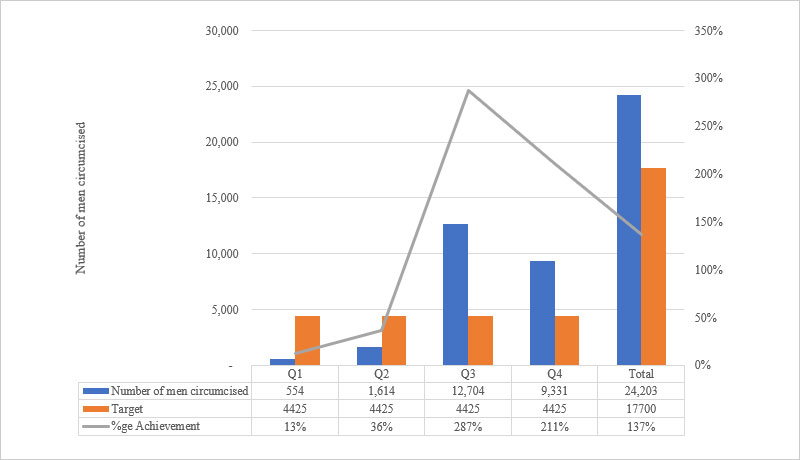
Lessons Learned
Engaging the ‘right’ stakeholders not only contributes to increased access to VMMC, but also improves the quality of service delivery and reporting. Successful active engagement of the HIV Directorate resulted in a rapid scale-up of VMMC services within the targeted population in a short period. The UPDF leadership style is a unique resource that can be used to improve not only VMMC but other HIV-related interventions as well.
